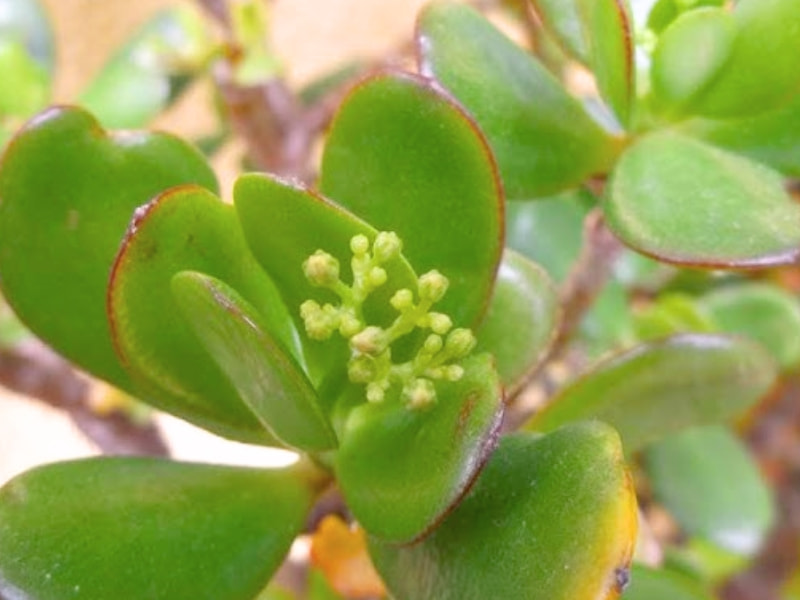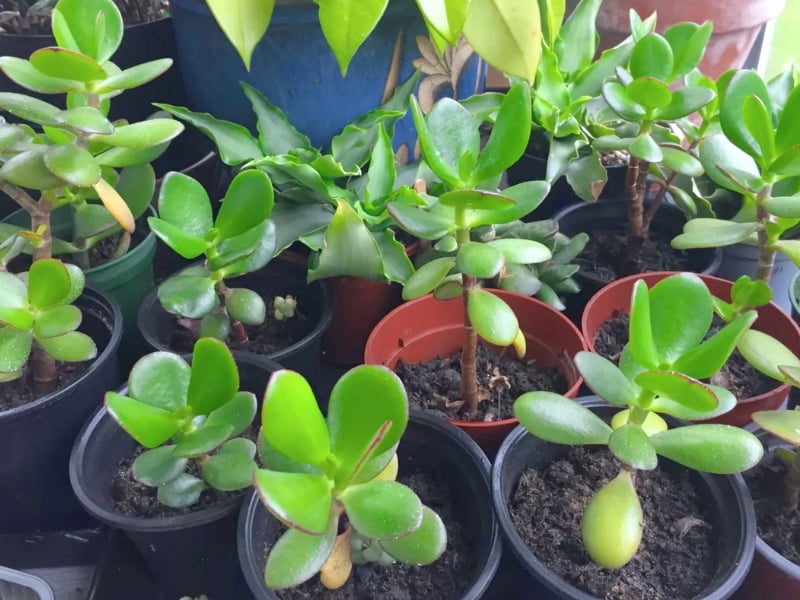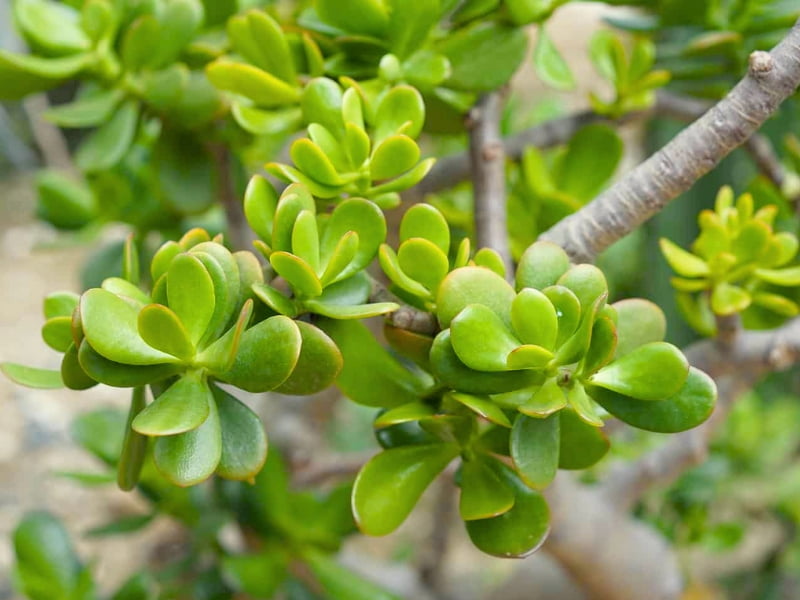Jade Plant, also commonly known as money plant, lucky plant, or friendship tree, and botanically as Crassula ovata, is a popular succulent renowned for its ease of care and symbolic association with prosperity.
Gardencenterpoint.com provides a comprehensive resource for cultivating thriving Crassula ovata, offering solutions for every stage of plant parenthood, from initial jade plant selection to long-term maintenance. We’ll cover crucial aspects like propagation and understanding common problems. Some synonyms for the money plant include dollar plant.

1. Understanding the Jade Plant: Origins, Types, and Symbolism
The Crassula ovata originates from South Africa and Mozambique, thriving in dry, rocky environments. This explains its succulent nature – the ability to store water in its fleshy leaves and stems. This adaptation allows it to withstand periods of drought, making it a resilient and low-maintenance houseplant. The plant’s association with good luck and prosperity stems from Feng Shui principles, where its vibrant green leaves are believed to attract wealth and positive energy. The rounded, coin-like shape of the leaves further reinforces this symbolism.
| Common Name | Jade Plant, Money Plant, Lucky Plant, Friendship Tree, Dollar Plant |
| Botanical Name | Crassula ovata |
| Family | Crassulaceae |
| Genus | Crassula |
| Species | ovata |
| Origin | South Africa, Mozambique |
| Native | Not native to the USA, but widely cultivated as a houseplant |
| Life Cycle | Perennial |
| Plant Type | Succulent |
| Hardiness Zone | 9-11 (Generally grown as a houseplant in colder zones) |
| Sunlight | Bright, Indirect Light (4-6 hours per day) |
| Maintenance | Low |
| Water | Low; “Soak and Dry” method recommended |
| Drainage | Well-Drained |
| Spacing | Depends on pot size; allow for growth |
| Flowering Period | Spring/Summer (Mature plants may bloom, but it’s not very common indoors) |
| Height | Up to 3-6 feet (indoors, can be pruned to maintain desired size) |
| Growth Rate | Slow to Moderate |
| Flower Color | White or Pink (if flowering occurs) |
| Stem Color | Green, becoming woody with age |
| Leaf Color | Green, may get red hues at the edges. |
| Flower Benefit | Not primarily grown for flowers; foliage is the main attraction |
| Garden Style | Rock Garden, Container Garden, Indoor |
| Uses | Houseplant, Bonsai, Ornamental |
| Soil pH | Slightly Acidic to Slightly Alkaline (6.0-7.5) |
| Propagation Methods | Leaf Cuttings, Stem Cuttings |
| Toxicity | Toxic to cats and dogs |
| Notable Feature | Long-lived; easy to propagate |
| Air Purifying | Yes |
| Humidity | Average household humidity |
| Temperature | Average room temperatures 65°F and 75°F (18°C – 24°C) |
| Fertilizer | Balanced, water-soluble fertilizer, diluted |
| Common Problems | Drooping, Shriveled or Yellowing of leaves, Mealybugs, Spider Mites, Root Rot |
| Dormancy | Winter |
| Pruning | As needed to shape or remove damaged leaves |
| Repotting | Every 2-3 years, or when root-bound |
| USDA Hardiness | Zones 10 through 11 |
There are numerous cultivars and varieties of Jade Plants, each with unique characteristics. Some popular examples include:
- ‘Hummel’s Sunset’: Known for its vibrant yellow and red-tipped leaves, especially when exposed to bright light.
- ‘Tricolor’: Features leaves with streaks of cream, yellow, and green.
- ‘Gollum’: This variety has tubular leaves that resemble fingers or suction cups.
- ‘Hobbit’: Similar to ‘Gollum’, but with leaves that are more curled and twisted.
- ‘Variegata’: Displays leaves with white or yellow variegation.
The longevity of a well-cared-for Jade Plant is noteworthy. With proper attention, these plants can live for decades, even becoming family heirlooms passed down through generations. A study published in the journal Acta Horticulturae documented the long-term cultivation of various succulent species, including Crassula ovata, highlighting their adaptability and potential for extended lifespans. (Source: Acta Horticulturae, International Society for Horticultural Science).

2. Essential Jade Plant Care: Light, Water, Soil, and Temperature
Providing optimal care for your Jade Plant involves understanding its basic needs. Here’s a detailed breakdown:
Light:
Jade Plants thrive in bright, indirect light. A south-facing window is ideal in most homes, providing several hours of sunlight daily. However, direct, intense sunlight, especially during the hottest part of the day, can scorch the leaves. Signs of insufficient light include etiolation (leggy growth with pale leaves), while excessive light may cause red tinges or brown spots on the foliage.
- Recommendation: Aim for at least 4-6 hours of bright, indirect light per day. If natural light is limited, consider supplementing with a grow light. Gardencenterpoint.com offers reviews of various grow light options.
Water:
Overwatering is the most common mistake in Jade Plant care. These succulents are highly susceptible to root rot if their soil remains consistently wet. The “soak and dry” method is highly recommended.
- Step-by-step Watering Guide:
- Check the soil: Insert your finger about 2 inches into the soil. If it feels dry, it’s time to water.
- Water thoroughly: Pour water evenly over the soil until it drains freely from the drainage holes at the bottom of the pot.
- Empty the saucer: Remove any excess water that has collected in the saucer to prevent the roots from sitting in water.
- Frequency: Watering frequency depends on several factors, including the size of the pot, the type of soil, the humidity, and the temperature. Generally, water every 2-3 weeks during the growing season (spring and summer) and reduce watering to every 4-6 weeks during the dormant season (fall and winter).
- Key research: A research article from Iowa State Univeristy Extension and Outreach indicates the importance of well-draining soil and proper water managment to control Pythium and Phytophthora, common fungal pathogens.
Soil:
A well-draining potting mix is crucial for Jade Plants. A cactus or succulent mix is ideal, as it provides the necessary drainage and aeration to prevent root rot. You can also create your own mix by combining regular potting soil with perlite or coarse sand.
- Recommended Soil Mix: 2 parts cactus/succulent mix, 1 part perlite.
- Avoid: Heavy, clay-based soils that retain too much moisture.
Temperature:
Jade Plants prefer average room temperatures between 65°F and 75°F (18°C – 24°C). They can tolerate slightly cooler temperatures at night, down to 55°F (13°C). However, protect them from frost and extreme temperature fluctuations.
- Ideal Temperature Range: 65°F – 75°F (18°C – 24°C) during the day, 55°F – 65°F (13°C – 18°C) at night.
Humidity:
Jade Plants are adapted to dry conditions and do not require high humidity. Average household humidity levels are typically sufficient. Avoid placing them near humidifiers or in excessively damp environments.
Fertilizer: Feed the plant with a balanced, water-soluble fertilizer diluted. Do this every 2-4 months.
- Avoid over-fertilizing.
3. Jade Plant Propagation: Multiplying Your Fortune
Propagating Jade Plants is remarkably easy, allowing you to expand your collection or share them with friends and family. There are two primary methods: leaf cuttings and stem cuttings.
Leaf Cuttings:
- Select a healthy leaf: Choose a plump, firm leaf from the parent plant. Gently twist and pull the leaf from the stem, ensuring that the entire leaf, including the base, is removed. A clean break is essential for successful rooting.
- Callus formation: Allow the leaf cutting to air dry for several days (3-7 days) until a callus forms over the cut end. This helps prevent rot when the cutting is planted.
- Planting: Once the callus has formed, place the leaf cutting on top of a well-draining potting mix (cactus/succulent mix). You can either lay the leaf flat on the soil surface or insert the calloused end slightly into the soil.
- Watering: Mist the soil lightly every few days, keeping it slightly moist but not soggy. Avoid overwatering.
- Root development: After a few weeks, roots should begin to develop from the base of the leaf. You may also notice small plantlets (baby Jade Plants) forming.
- Transplanting: Once the plantlets have grown to a reasonable size (about an inch or two), they can be gently separated from the parent leaf and transplanted into individual pots.
Stem Cuttings:
- Select a healthy stem: Choose a stem that is at least 4-6 inches long and has several leaves. Use a clean, sharp knife or pruning shears to make a cut just below a node (the point where leaves attach to the stem).
- Remove lower leaves: Remove the leaves from the bottom 2 inches of the stem to prevent them from rotting when the cutting is planted.
- Callus formation: Allow the stem cutting to air dry for several days (3-7 days) until a callus forms over the cut end.
- Planting: Insert the calloused end of the stem cutting into a well-draining potting mix (cactus/succulent mix). Bury the stem about 2 inches deep.
- Watering: Water the cutting thoroughly after planting, then allow the soil to dry out slightly between waterings.
- Root development: Roots should begin to develop within a few weeks. You can gently tug on the cutting to check for resistance, which indicates that roots have formed.

4. Troubleshooting Common Jade Plant Problems
While Jade Plants are generally low-maintenance, they can occasionally encounter problems. Here’s a guide to identifying and addressing some common issues:
- Drooping Leaves: This is often a sign of underwatering or overwatering. Check the soil moisture to determine the cause. If the soil is dry, water thoroughly. If the soil is wet, allow it to dry out completely before watering again. Root rot, caused by overwatering, can also lead to drooping leaves.
- Shriveled Leaves: This usually indicates underwatering. The plant is drawing moisture from its leaves to survive. Water thoroughly and increase watering frequency if necessary.
- Yellowing Leaves: Yellowing leaves can be caused by several factors, including overwatering, poor drainage, nutrient deficiencies, or pests. Check the soil moisture and drainage, and consider fertilizing if the plant hasn’t been fed recently.
- Brown Spots on Leaves: Brown spots can be caused by sunburn (excessive direct sunlight), fungal diseases, or pest infestations. Move the plant to a location with brighter, indirect light, improve air circulation, and treat any pests if present.
- Mealybugs: These small, white, cottony insects can infest Jade Plants, sucking sap from the leaves and stems. They often hide in leaf axils and crevices. Treat infestations with insecticidal soap or neem oil.
- Spider Mites: These tiny pests are difficult to see with the naked eye, but they create fine webbing on the plant. They also suck sap from the leaves, causing stippling and discoloration. Treat infestations with insecticidal soap or neem oil.
- Root Rot: This is a serious condition caused by overwatering and poor drainage. The roots become brown and mushy, and the plant may collapse. If root rot is detected early, you may be able to save the plant by repotting it in fresh, well-draining soil and removing any affected roots.
5. Choosing the Right Pot and Soil for Your Jade Plant
Selecting the appropriate pot and soil is vital for the long-term health of your Jade Plant.
Pot:
- Material: Terracotta pots are highly recommended for Jade Plants because they are porous, allowing for better air circulation and drainage. Plastic pots can also be used, but they retain more moisture, so careful watering is essential.
- Size: Choose a pot that is only slightly larger than the plant’s root ball. A pot that is too large can retain too much moisture, leading to root rot. Repotting is generally needed every 2-3 years, or when the plant becomes root-bound (roots circling the bottom of the pot).
- Drainage Holes: Ensure that the pot has drainage holes at the bottom to allow excess water to escape.
Soil:
As mentioned earlier, a well-draining potting mix is crucial.
- Recommended Options:
- Cactus/succulent mix
- A blend of regular potting soil, perlite, and coarse sand (2:1:1 ratio)
- Commercial mixes specifically formulated for succulents
6. Jade Plant Varieties: Exploring Different Shapes and Colors
The diversity within Crassula ovata offers a range of aesthetic choices for plant enthusiasts. The section above on “understanding the Jade Plant” touched briefly on the topic. Let’s expand on the distinct characteristics:
- ‘Hummel’s Sunset’: The defining feature is the vibrant coloration of the leaves. In bright light, the edges of the leaves turn a brilliant yellow and red, creating a sunset-like effect. The intensity of the color varies depending on light exposure and temperature.
- ‘Tricolor’: The ‘Tricolor’ cultivar displays a captivating blend of colors. The leaves are variegated with streaks of cream, yellow, and green. The variegation pattern can vary, making each plant unique.
- ‘Gollum’: The ‘Gollum’ Jade Plant is easily recognizable by its tubular leaves, which are often described as finger-like or resembling suction cups. The leaves are typically green, but they may develop reddish tips in bright light.
- ‘Hobbit’: The ‘Hobbit’ cultivar is similar to ‘Gollum’ but has leaves that are more curled and twisted, giving it a more whimsical appearance.
- ‘Variegata’: ‘Variegata’ encompasses a range of Jade Plants with white or yellow variegation on their leaves. The variegation can be in the form of stripes, blotches, or marbling.
7. The Benefits of Owning a Jade Plant
Beyond their aesthetic appeal and symbolic association with prosperity, Jade Plants offer several tangible benefits:
- Air Purification: Like many other houseplants, Jade Plants can help improve indoor air quality. Studies by NASA have shown that plants can remove certain volatile organic compounds (VOCs) from the air, such as formaldehyde and benzene. (Source: NASA Clean Air Study)
- Easy Care: Their low-maintenance nature makes them ideal for beginners and busy individuals.
- Longevity: With proper care, they can live for many years, becoming a lasting addition to your home.
- Stress Reduction: Studies have shown that interacting with plants can reduce stress and improve mood.
- Feng Shui: As mentioned, they are believed to bring good luck and prosperity according to Feng Shui principles.
8. Jade Plants and Pets: Safety Considerations
Jade Plants are considered toxic to cats and dogs if ingested. The toxic principle is unknown, but ingestion can cause symptoms such as vomiting, lethargy, depression, and incoordination.
- Important: If you have pets, keep Jade Plants out of their reach. Place them on high shelves or in hanging baskets.
- Emergency: If you suspect your pet has ingested any part of a Jade Plant, contact your veterinarian or the ASPCA Animal Poison Control Center immediately.

Leave a Reply